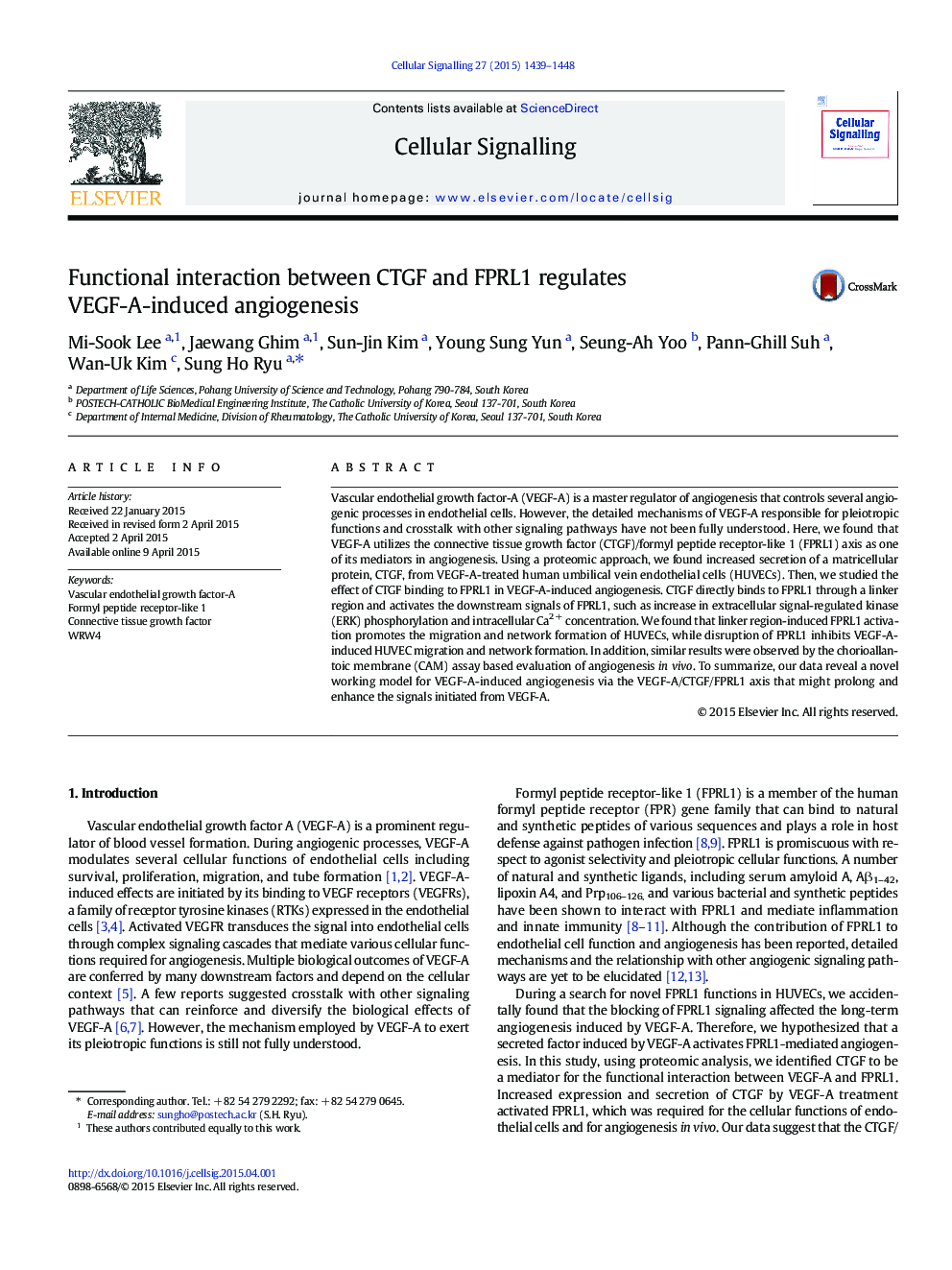| Article ID | Journal | Published Year | Pages | File Type |
|---|---|---|---|---|
| 10815909 | Cellular Signalling | 2015 | 10 Pages |
Abstract
Vascular endothelial growth factor-A (VEGF-A) is a master regulator of angiogenesis that controls several angiogenic processes in endothelial cells. However, the detailed mechanisms of VEGF-A responsible for pleiotropic functions and crosstalk with other signaling pathways have not been fully understood. Here, we found that VEGF-A utilizes the connective tissue growth factor (CTGF)/formyl peptide receptor-like 1 (FPRL1) axis as one of its mediators in angiogenesis. Using a proteomic approach, we found increased secretion of a matricellular protein, CTGF, from VEGF-A-treated human umbilical vein endothelial cells (HUVECs). Then, we studied the effect of CTGF binding to FPRL1 in VEGF-A-induced angiogenesis. CTGF directly binds to FPRL1 through a linker region and activates the downstream signals of FPRL1, such as increase in extracellular signal-regulated kinase (ERK) phosphorylation and intracellular Ca2Â + concentration. We found that linker region-induced FPRL1 activation promotes the migration and network formation of HUVECs, while disruption of FPRL1 inhibits VEGF-A-induced HUVEC migration and network formation. In addition, similar results were observed by the chorioallantoic membrane (CAM) assay based evaluation of angiogenesis in vivo. To summarize, our data reveal a novel working model for VEGF-A-induced angiogenesis via the VEGF-A/CTGF/FPRL1 axis that might prolong and enhance the signals initiated from VEGF-A.
Keywords
Related Topics
Life Sciences
Biochemistry, Genetics and Molecular Biology
Biochemistry
Authors
Mi-Sook Lee, Jaewang Ghim, Sun-Jin Kim, Young Sung Yun, Seung-Ah Yoo, Pann-Ghill Suh, Wan-Uk Kim, Sung Ho Ryu,
